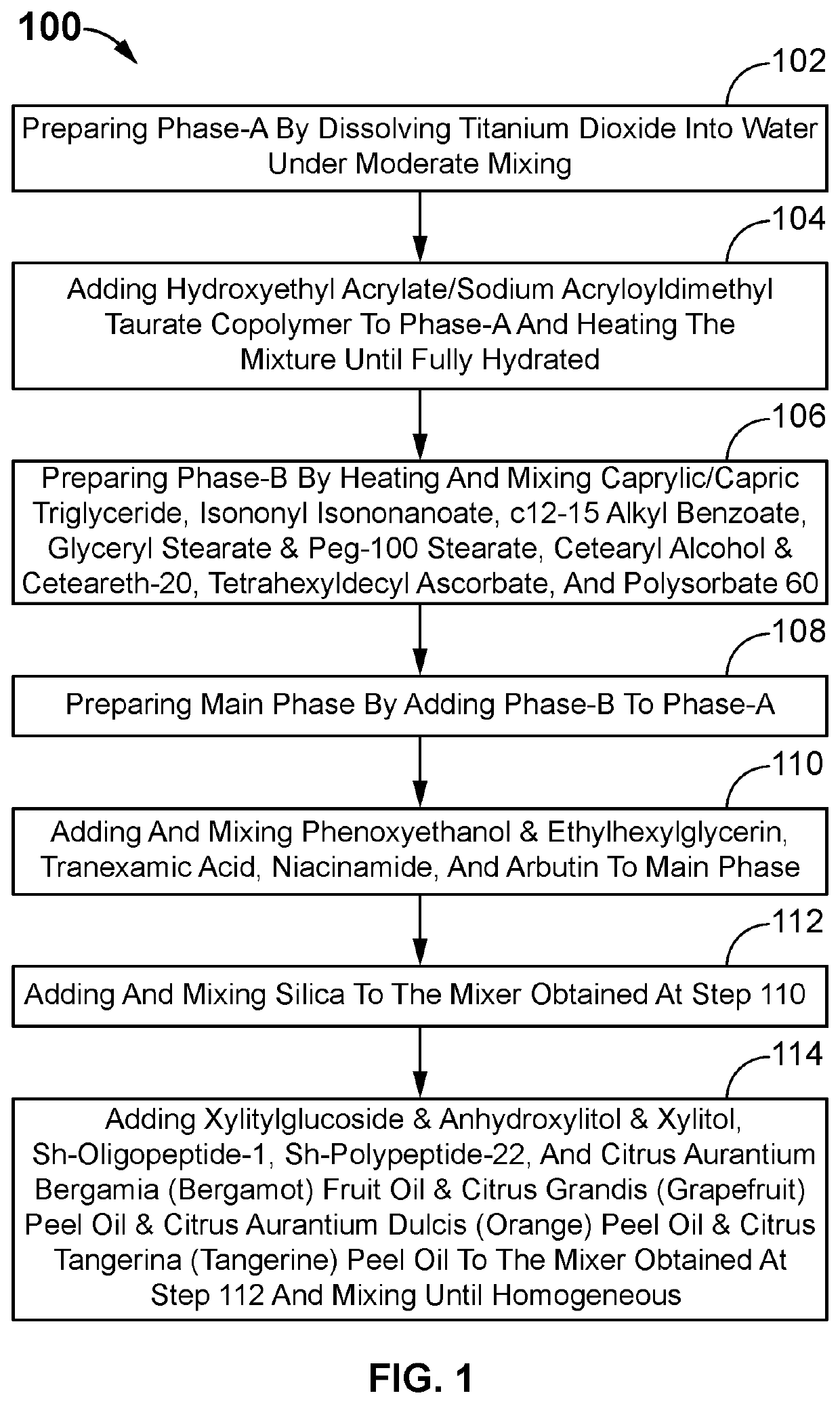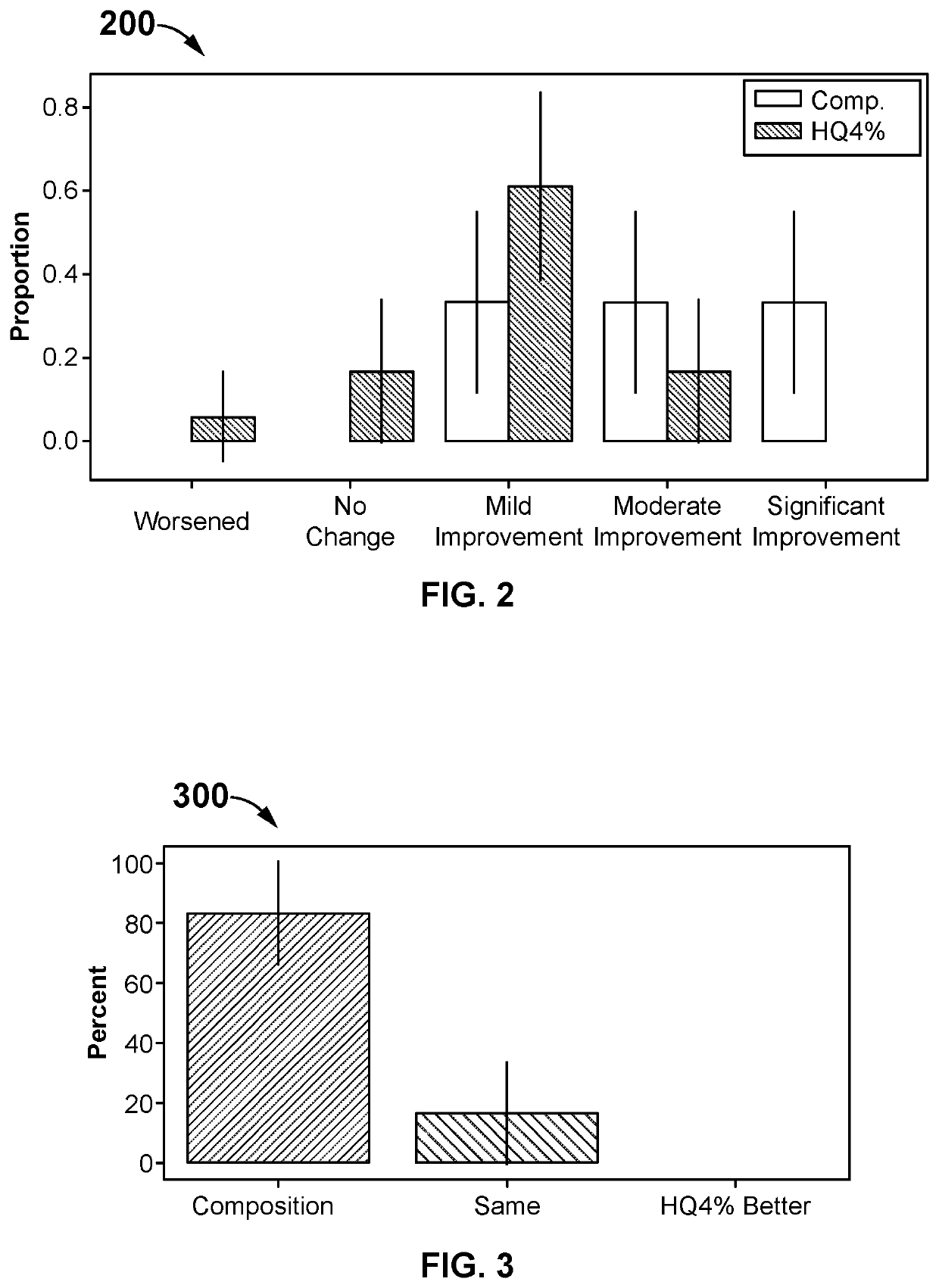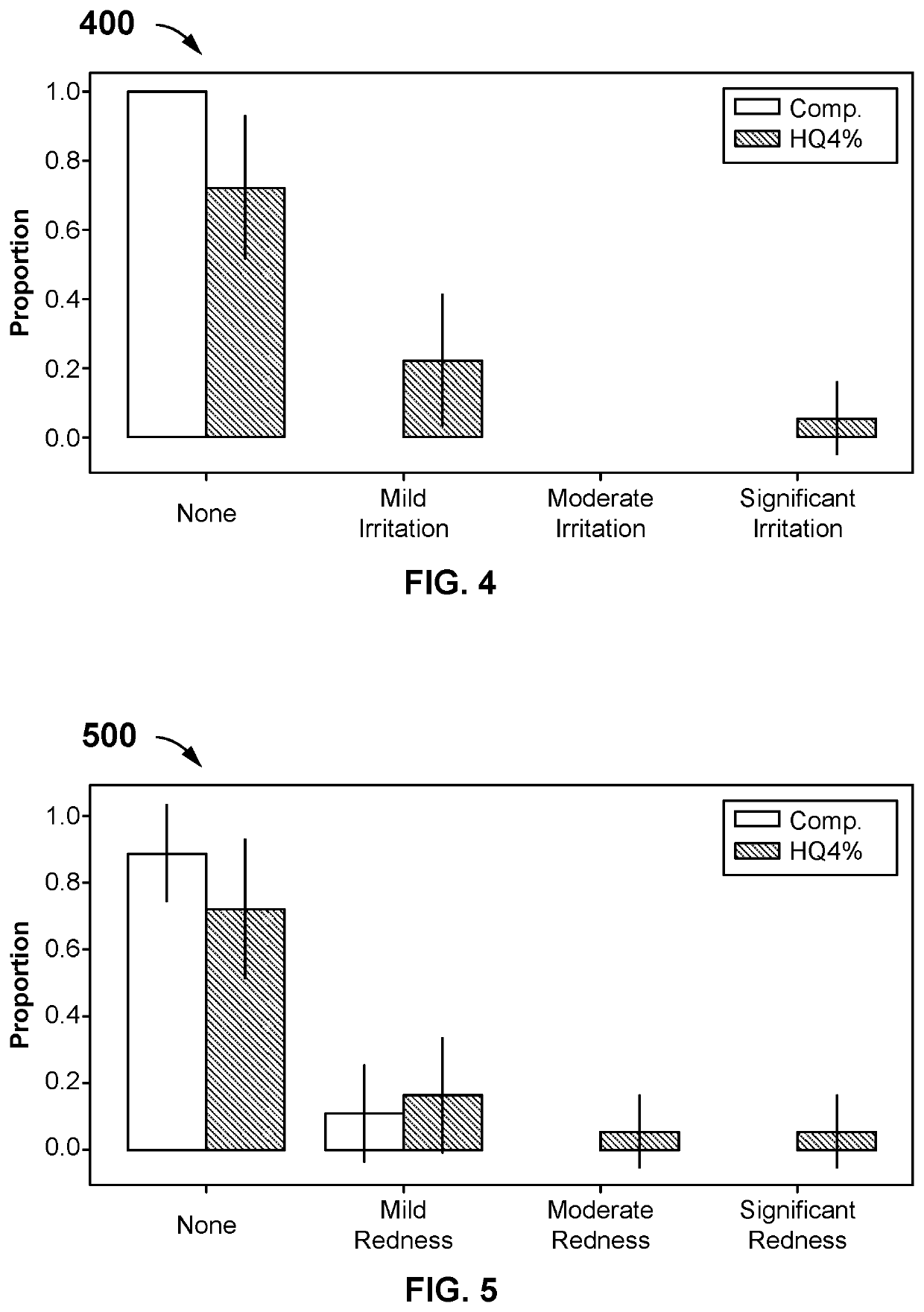Skin brightening composition
- Summary
- Abstract
- Description
- Claims
- Application Information
AI Technical Summary
Benefits of technology
Problems solved by technology
Method used
Image
Examples
example 1
Methods:
[0064]A single-center, prospective, randomized, controlled split-face study has investigated the safety and efficacy of the composition compared to HQ4% in treating hyperpigmentation. Participants over the age of 18 with facial pigmentation are randomly assigned to have one side of their face treated with the composition twice a day (morning and night application) and the other treated with HQ4% applied at night. Patients or participants or subjects use a 5-point scale to self-assess their overall appearance, and a 4-point scale to assess the redness, irritation, and tolerability to the skin brightening creams. A Wilcoxon Signed Rank Test is used to test whether there is a statistical difference between the two treatments.
[0065]The composition-treated hyperpigmentation has a statistically significant improvement in the overall appearance of hyperpigmentation and is shown to be 28.5% better than HQ4%-treated skin in the patient self-assessment, and 27.0% better than HQ4%-trea...
example 2
Study Design and Population:
[0068]This single-center, prospective, randomized, controlled study investigates the safety and efficacy of the proprietary product the composition compared to HQ4% in treating hyperpigmentation.
[0069]Hydroquinone 4.0% (HQ4%) is mixed in a pre-manufactured anhydrous topical gel consisting of the following inactive ingredients: dimethicone, caprylyl methicone, PEG-12 dimethicone / PPG-20 crosspolymer, butyrospermum parki (shea) butter, polysilicone-11, tocopheryl acetate, and BHT (PCCA WO6 Anhydrous Topical Gel, Houston, Tex., USA). Tocopheryl acetate and BHT are not active ingredients and are serving as preservatives in this formula.
[0070]The active ingredients are mixed in a moisturizing cream base consisting of the inactive ingredients. The inactive ingredients are water, caprylic / capric triglyceride, isononyl isononanoate, C12-15 alkyl benzoate, silica, cetearyl alcohol, glyceryl stearate, PEG-100 stearate, ceteareth-20, polysorbate 60, hydroxyethyl acry...
example 3
Patient Self-Assessment:
[0079]After one month of treatment, the patients have assessed the two products from baseline on overall appearance, irritation, redness, and tolerability using a Likert scale as shown in Table 2. One patient dropped out of the study after two weeks due to severe irritation, redness, and intolerability from HQ4% use. This patient's last observation for HQ4% is carried forward to the one-month assessment.
[0080]After one month of the composition treatment, 6 out of 18 (33.3%) have found a mild improvement, 6 out of 18 (33.3%) have found a moderate improvement, and 6 out of 18 (33.3%) have found a significant improvement in the overall appearance of their hyperpigmentation relative to baseline. After one month of HQ4% treatment, 1 out of 18 (5.6%) have found a worsening in overall appearance, 3 out of 18 (16.7%) have found no change, 11 out of 18 (61.1%) have found a mild improvement, and 3 out of 18 (16.7%) have found a moderate improvement in their hyperpigmen...
PUM
| Property | Measurement | Unit |
|---|---|---|
| Fraction | aaaaa | aaaaa |
| Fraction | aaaaa | aaaaa |
| Fraction | aaaaa | aaaaa |
Abstract
Description
Claims
Application Information
 Login to View More
Login to View More - R&D
- Intellectual Property
- Life Sciences
- Materials
- Tech Scout
- Unparalleled Data Quality
- Higher Quality Content
- 60% Fewer Hallucinations
Browse by: Latest US Patents, China's latest patents, Technical Efficacy Thesaurus, Application Domain, Technology Topic, Popular Technical Reports.
© 2025 PatSnap. All rights reserved.Legal|Privacy policy|Modern Slavery Act Transparency Statement|Sitemap|About US| Contact US: help@patsnap.com



